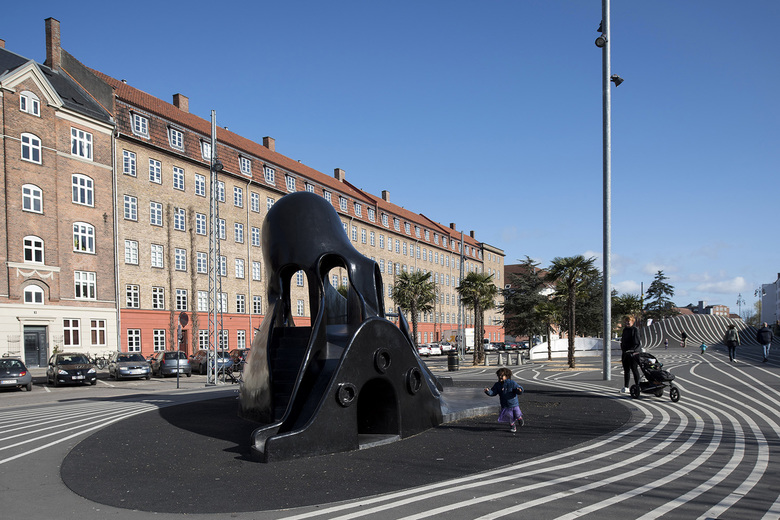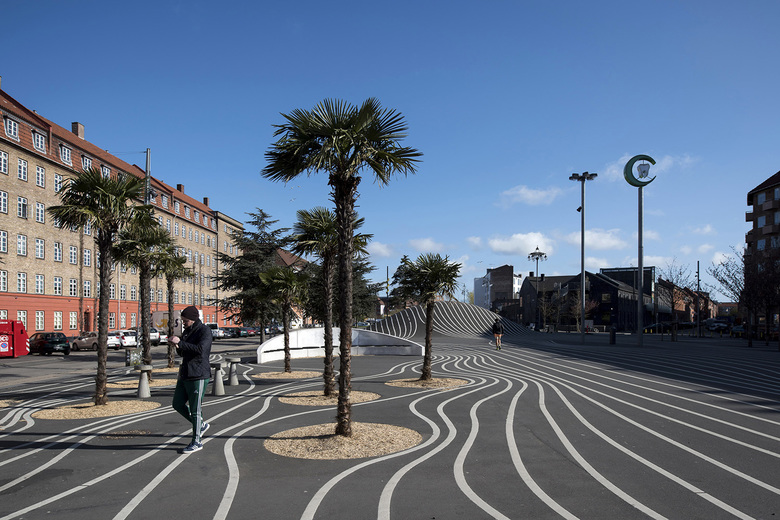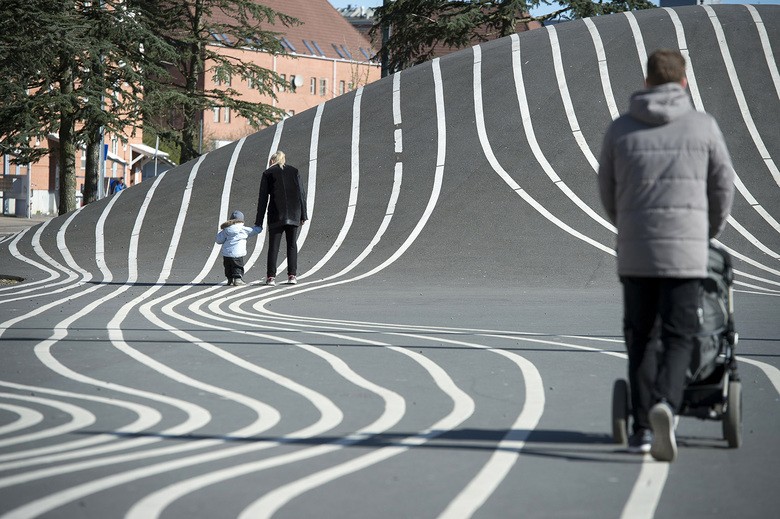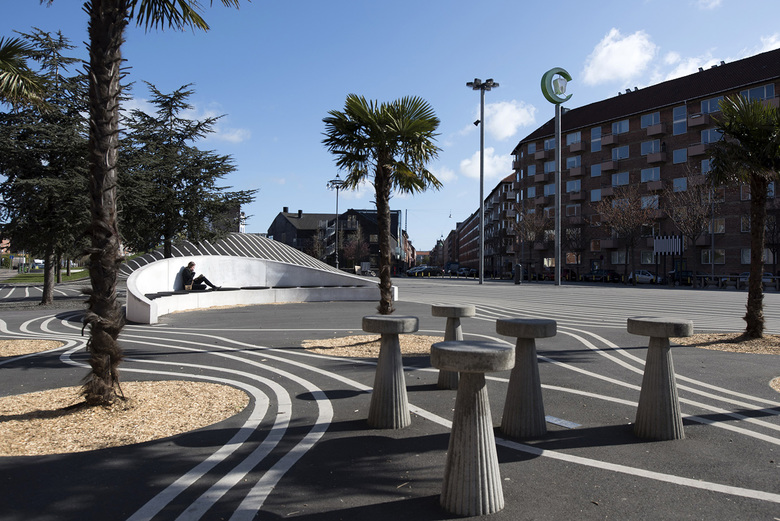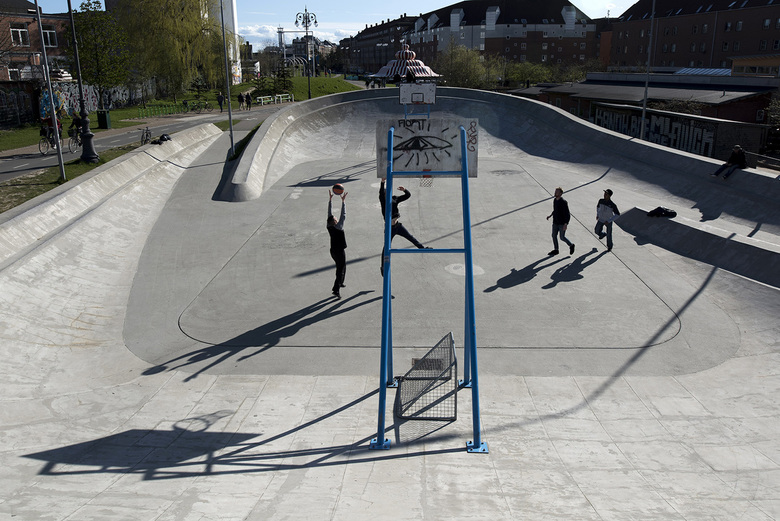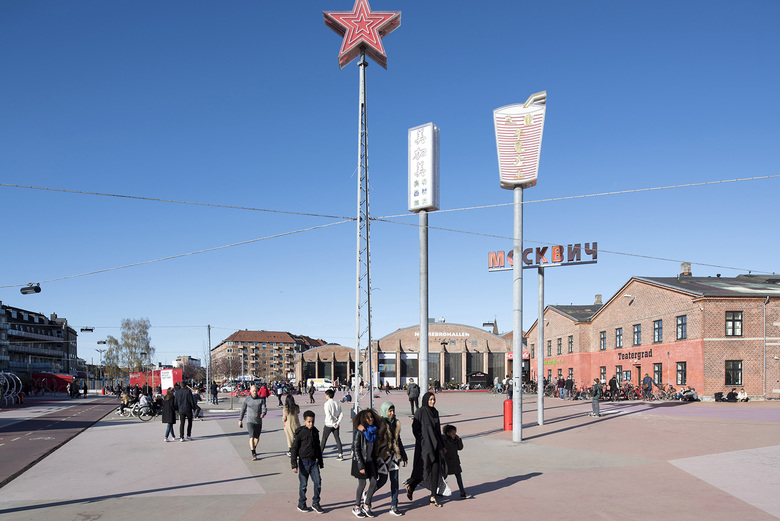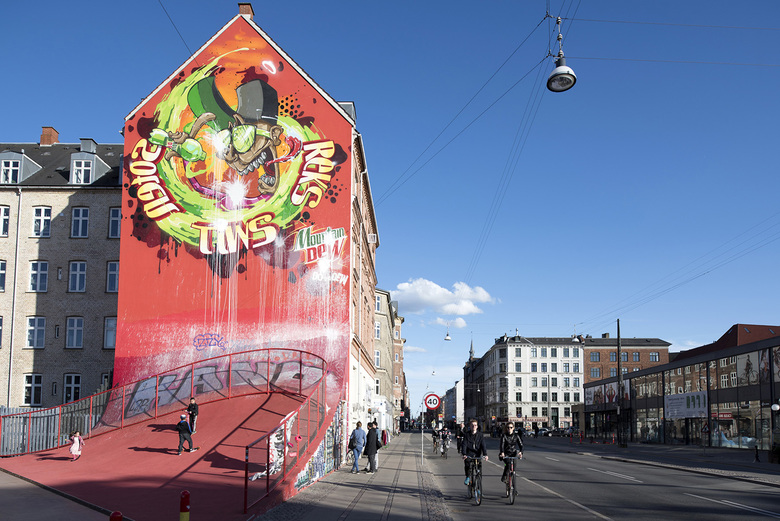2016 Aga Khan Award for Architecture
Superkilen
BIG – Bjarke Ingels Group, Topotek 1 and Superflex
5. October 2016
Located in Nørrebro area, Superkilen is a place for all ages kids, youths, families and the elderly alike, an outdoor space helping to activate the people of Copenhagen. (Photo: Aga Khan Trust for Culture / Kristian Skeie)
This recipient of a 2016 Aga Khan Award for Architecture is a public space promoting integration across lines of ethnicity, religion and culture.
Superkilen is a kilometre-long urban park located in Nørrebro, a diverse and socially challenged neighbourhood of Copenhagen. Designed by architects BIG-Bjarke Ingels Group, artists Superflex and landscape architects TOPOTEK 1 in collaboration with the local – predominantly Muslim – community, the park takes the historical themes of the universal garden and the amusement park and translates them into a contemporary urban setting. With a healthy dose of irreverence, it sheds light on the positive dimensions of cultural diversity and invites people – young and old – to play.
This urban park is identifiable and memorable, Superkilen relates to the human scale and has a sense of activity, complexity and visual richness; all making it a highly walkable experience. (Photo: Aga Khan Trust for Culture / Kristian Skeie)
Superkilen is part of a larger urban renewal plan developed as a partnership between the Municipality of Copenhagen and the private philanthropic association RealDania. Its name refers to the physical constraints of the site, a narrow ‘wedge’ (kilen) extending between two important traffic arteries. The park’s pedestrian paths and cycle routes provide better connections between these two roads, while its public lighting creates a greater sense of security – an important consideration in an area historically blighted by crime. Opening up previously hard-to- reach neighbourhoods to the west and east, Superkilen plugs the area back into the infrastructure of the city as a whole.
The parallel, yet diverging, white stripes are meant to curate movement of people on site around and towards objects. (Photo: Aga Khan Trust for Culture / Kristian Skeie)
Colour plays a significant role in the park, which is formally divided into three distinct zones organised around different programmes – Red Square (market/culture/sport), Black Market (urban living room), Green Park (sport/play). Of these, the most visually striking is the Black Market, inspired, according to the architects, by the Lars von Trier film Dogville (2003), which uses a minimal stage-like set with white lines on black ground. In the same way, the Black Market could be seen as a stage on which the local residents enact their identities in public space.
With curved white german bench and Romanian stools, the Black Market is the central section of the Superkilen and is conceived as an urban living room. (Photo: Aga Khan Trust for Culture / Kristian Skeie)
These multiple identities are evident in the trees and objects that furnish the park, chosen through an intensive participatory planning process. A swing bench from Baghdad, a star-shaped fountain from Morocco, chess tables from Sofia, basketball hoops from Mogadishu – these are among the park’s 108 objects from the 62 home countries of the local inhabitants. Together they form an exhibition of best-practice street furniture from all over the world, and symbolise the residents’ ownership of the park.
